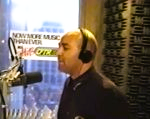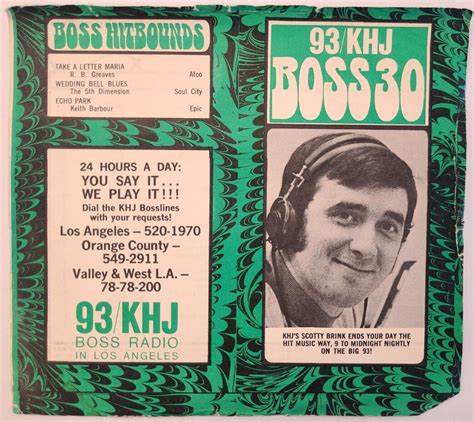
Toronto’s Top 40 Radio Rivalry of the ’60s and ’70s
It’s a crisp autumn evening in Toronto, sometime in the late 1960s. The CN Tower hasn’t yet pierced the skyline, but the city is buzzing with energy. Teenagers cruise along Yonge Street, their radios blaring the latest hits from either CHUM or CFTR. These two stations, locked in a fierce battle for dominance, are more than just radio frequencies—they’re cultural institutions shaping the musical tastes and daily lives of an entire generation. This was the golden era of Top 40 radio in Toronto, and the rivalry between CHUM and CFTR was as intense as the music they played.
Toronto in the late ’60s and ’70s was a city on the rise. The baby boomer generation was coming of age, and for the first time, teenagers had their own culture—and their own soundtrack. Top 40 radio was at its peak, delivering a steady stream of rock ‘n’ roll, Motown, and pop hits that defined youth culture. In this electrified atmosphere, CHUM and CFTR emerged as Toronto’s dueling giants of AM radio, each vying for supremacy in a city that couldn’t get enough of its airwaves.
CHUM’s transformation into a Top 40 powerhouse began on May 27, 1957, when it flipped formats and launched with Elvis Presley’s “All Shook Up” as its debut song. At the time, Allan Waters, CHUM’s owner, was taking a gamble. Inspired by the success of Top 40 radio in U.S. cities like Miami and Buffalo, Waters believed that Toronto was ready for a station catering to teenagers hungry for rock ‘n’ roll.
The gamble paid off. CHUM quickly became synonymous with Top 40 radio in Toronto. Its “CHUM Chart,” published weekly starting in May 1957, became a must-read for music fans eager to see which songs were climbing—or falling—on the local hit parade. The station’s DJs were just as important as the music they played. Early personalities like Al Boliska set the tone with their innovative morning shows filled with comedy sketches and outlandish stunts. Boliska famously wrestled Canadian icon Whipper Billy Watson in one promotional stunt—a moment that cemented his reputation as a larger-than-life figure on Toronto’s airwaves.
By the early 1960s, CHUM had solidified its dominance. Its lineup included Bob McAdorey, whose smooth delivery and deep knowledge of music made him a listener favorite. Tom Rivers joined in 1970 and brought an unmatched energy to his afternoon drive show. Rivers’ ability to connect with listeners while keeping them entertained made him one of CHUM’s most enduring stars.
CHUM wasn’t just about playing records—it was about creating an experience. The station hosted live concerts featuring acts like The Beatles at Maple Leaf Gardens and Elvis Presley during his brief Canadian tour. These events weren’t just concerts; they were cultural milestones that reinforced CHUM’s status as Toronto’s premier Top 40 station.
While CHUM enjoyed years of dominance, its reign wasn’t unchallenged forever. In 1972, CFTR switched to a Top 40 format after years of experimenting with beautiful music and middle-of-the-road programming. Backed by Rogers Communications and named in honor of Ted Rogers Sr., CFTR entered the battle with one goal: to dethrone CHUM.
CFTR’s strategy was aggressive from the start. The station hired top talent like Jim Brady, who brought charisma and humor to his morning show. Brady quickly became a household name in Toronto, rivaling CHUM’s Jay Nelson for morning drive supremacy. CFTR also invested heavily in promotions and production quality. By tweaking its signal to improve sound quality and adding reverb to give its broadcasts extra punch, CFTR created a sound that stood out on the crowded AM dial.
CFTR’s programming choices also set it apart. While CHUM leaned heavily on established hits, CFTR took risks by breaking new artists and playing deeper cuts from popular albums. This approach appealed to younger listeners who wanted something fresh and exciting.
By the late 1970s, CFTR had gained significant ground on CHUM. In 1979, Brady finally surpassed Nelson in morning ratings—a symbolic victory that signaled CFTR’s growing influence. By 1984, CFTR had overtaken CHUM in overall ratings, forcing its rival to abandon Top 40 altogether in favor of an adult contemporary format two years later.
]
The rivalry between CHUM and CFTR wasn’t confined to their playlists—it extended to every aspect of their operations. Both stations engaged in elaborate promotions designed to capture listeners’ attention and loyalty.
CHUM was famous for its contests, including cash giveaways that had listeners glued to their radios for hours waiting for their chance to win big. One particularly memorable promotion involved hiding a treasure chest somewhere in Toronto and providing cryptic clues on-air about its location. The contest sparked a citywide frenzy as listeners scoured parks and neighborhoods in search of the prize.
CFTR countered with equally ambitious promotions. The station once gave away a brand-new car every week for an entire summer—a stunt that drew enormous attention and boosted ratings during a critical period in its battle against CHUM.
Both stations also excelled at live remotes, broadcasting from shopping malls, community events, and even high school dances. These appearances allowed DJs to connect directly with listeners while reinforcing each station’s presence in the community.
At the heart of this rivalry were the DJs who brought these stations to life. For many listeners, these personalities weren’t just voices on the radio—they were friends who kept them company during commutes or late-night study sessions.
CHUM’s lineup included legends like Jay Nelson, whose morning show set the standard for humor and entertainment throughout much of the ’60s and ’70s. Nelson’s quick wit and ability to improvise made him an enduring favorite among listeners.
On CFTR’s side, Jim Brady emerged as a formidable rival to Nelson during his tenure from 1973 to 1981. Brady’s irreverent humor and knack for engaging callers made his show must-listen radio for many Torontonians.
Other notable figures included David Marsden at CFTR (later known for pioneering alternative rock radio) and Rick Moranis—yes, that Rick Moranis—who worked at both stations early in his career under his DJ alias “Rick Allan.”
For Toronto residents who grew up during this era, choosing between CHUM and CFTR wasn’t just about music—it was about identity. Fans often felt a deep loyalty to their chosen station, defending it passionately against detractors.
“I remember calling into Jay Nelson’s show every morning before school,” recalls Susan McLeod, now in her sixties but still nostalgic for those days. “Winning concert tickets or even just hearing my name on-air felt like magic.”
Meanwhile, former CFTR listener Dan Richards remembers how Jim Brady kept him laughing during long commutes downtown: “Brady made you feel like you were part of something special—like he was talking directly to you.”
These connections weren’t accidental—they were cultivated through relentless engagement efforts by both stations’ teams.
The rivalry between CHUM and CFTR wasn’t just significant locally—it set benchmarks nationally within Canadian broadcasting circles . Broadcasters across Canada watched closely how these two titans innovated programming strategies .
Written by: studio
CANADA RADIO CFTR CHUM music PAT HOLIDAY TARZAN DAN TOM RIVERS TORONTO
Similar posts
Recent Comments
No comments to show.-

Retro Rewind
With Kenneth Dell
For every Show page the timetable is auomatically generated from the schedule, and you can set automatic carousels of Podcasts, Articles and Charts by simply choosing a category. Curabitur id lacus felis. Sed justo mauris, auctor eget tellus nec, pellentesque varius mauris. Sed eu congue nulla, et tincidunt justo. Aliquam semper faucibus odio id varius. Suspendisse varius laoreet sodales.
close Top popular
© Copyright 2025 Aircheck Radio - is a proud listener supported 501(c)(3) nonprofit organization



 The gamble paid off. CHUM quickly became synonymous with Top 40 radio in Toronto. Its “CHUM Chart,” published weekly starting in May 1957, became a must-read for music fans eager to see which songs were climbing—or falling—on the local hit parade. The station’s DJs were just as important as the music they played. Early personalities like Al Boliska set the tone with their innovative morning shows filled with comedy sketches and outlandish stunts. Boliska famously wrestled Canadian icon Whipper Billy Watson in one promotional stunt—a moment that cemented his reputation as a larger-than-life figure on Toronto’s airwaves.
The gamble paid off. CHUM quickly became synonymous with Top 40 radio in Toronto. Its “CHUM Chart,” published weekly starting in May 1957, became a must-read for music fans eager to see which songs were climbing—or falling—on the local hit parade. The station’s DJs were just as important as the music they played. Early personalities like Al Boliska set the tone with their innovative morning shows filled with comedy sketches and outlandish stunts. Boliska famously wrestled Canadian icon Whipper Billy Watson in one promotional stunt—a moment that cemented his reputation as a larger-than-life figure on Toronto’s airwaves. CFTR’s strategy was aggressive from the start. The station hired top talent like Jim Brady, who brought charisma and humor to his morning show. Brady quickly became a household name in Toronto, rivaling CHUM’s Jay Nelson for morning drive supremacy. CFTR also invested heavily in promotions and production quality. By tweaking its signal to improve sound quality and adding reverb to give its broadcasts extra punch, CFTR created a sound that stood out on the crowded AM dial.
CFTR’s strategy was aggressive from the start. The station hired top talent like Jim Brady, who brought charisma and humor to his morning show. Brady quickly became a household name in Toronto, rivaling CHUM’s Jay Nelson for morning drive supremacy. CFTR also invested heavily in promotions and production quality. By tweaking its signal to improve sound quality and adding reverb to give its broadcasts extra punch, CFTR created a sound that stood out on the crowded AM dial.






